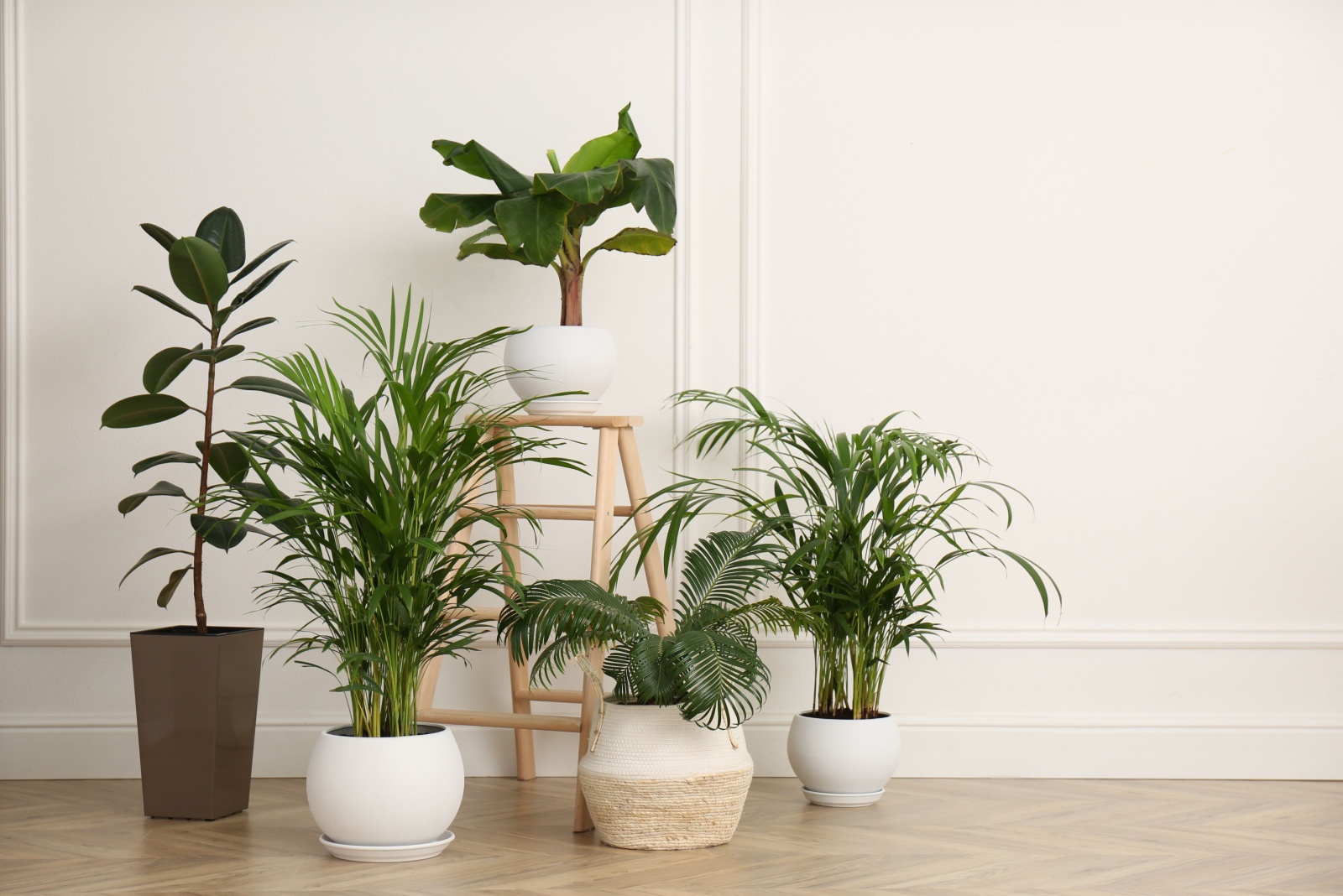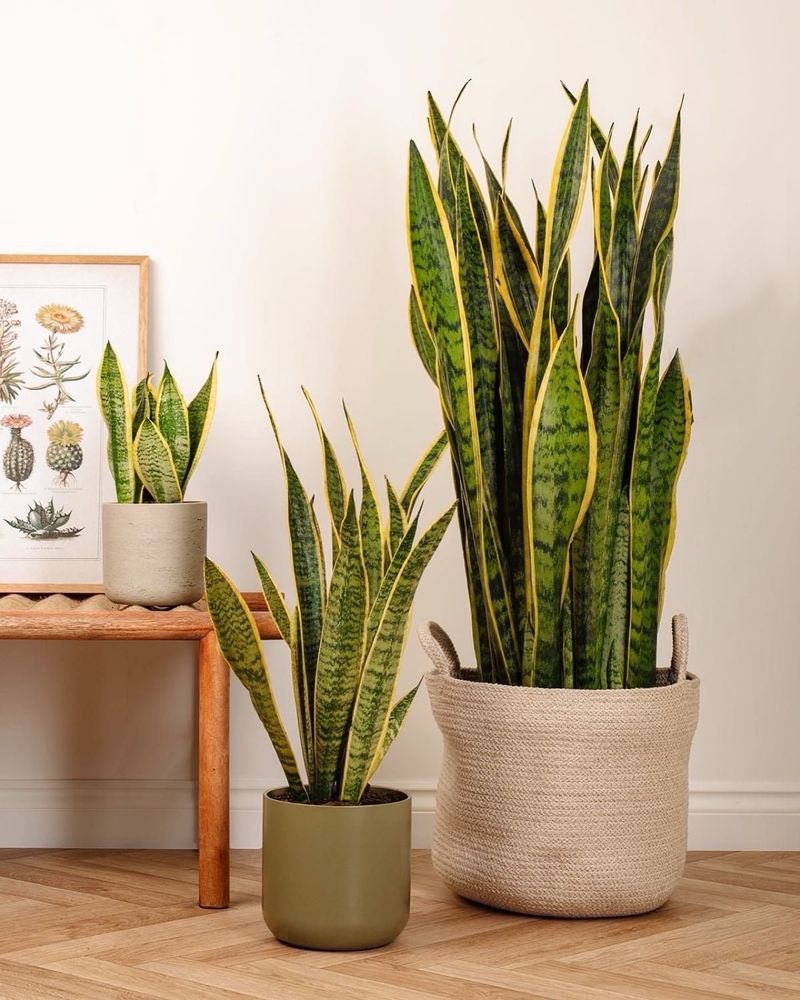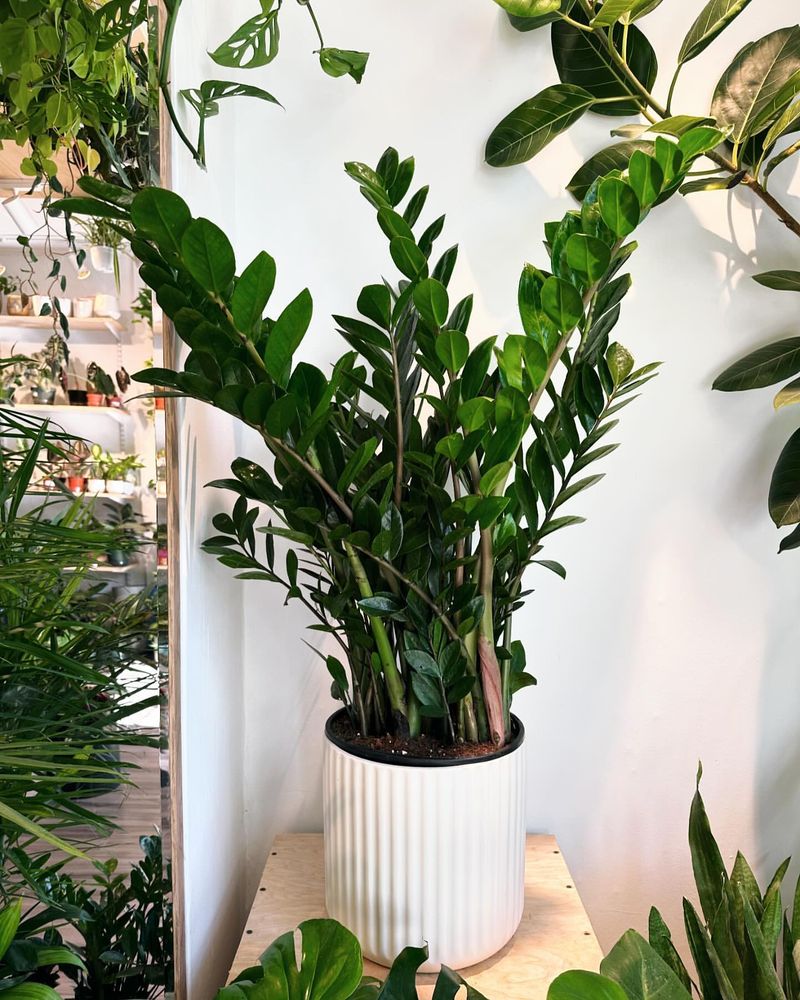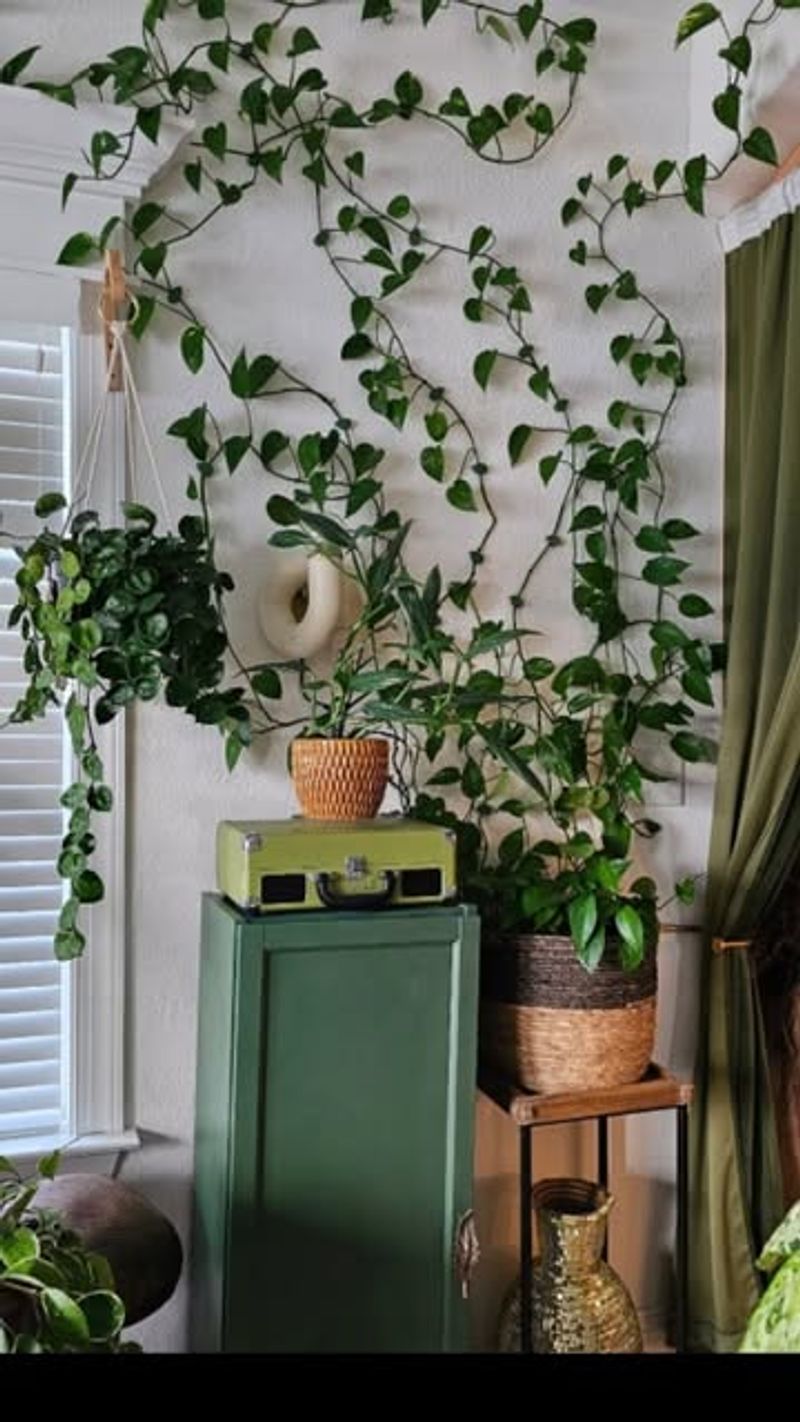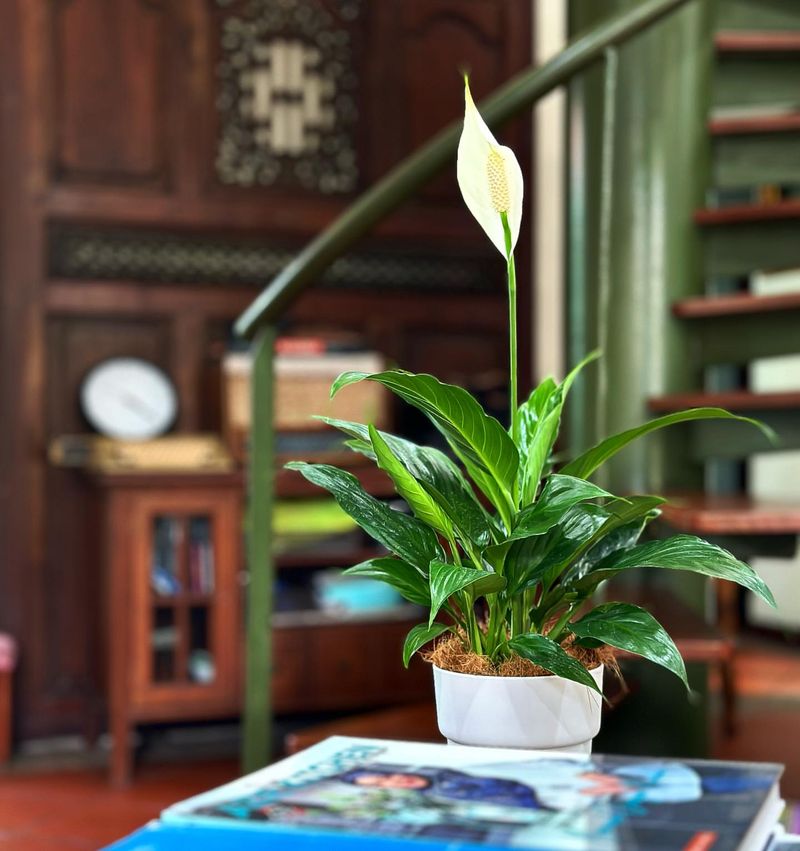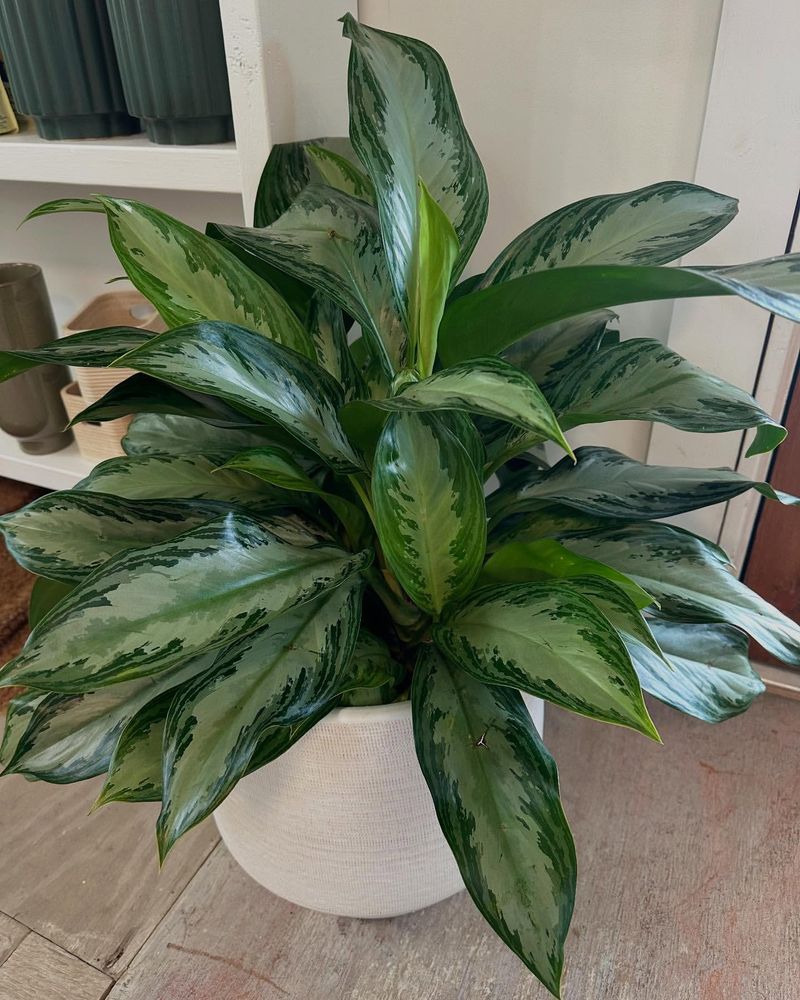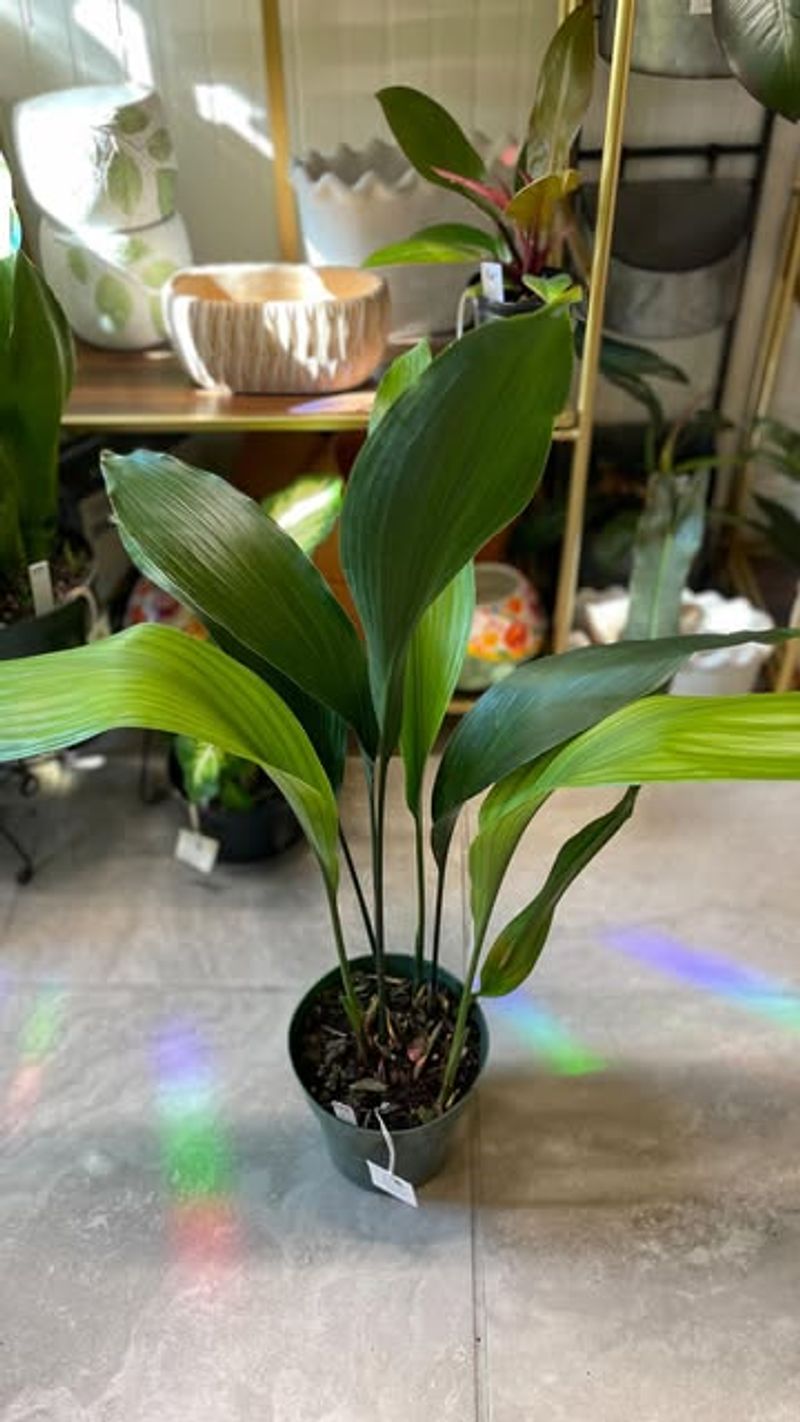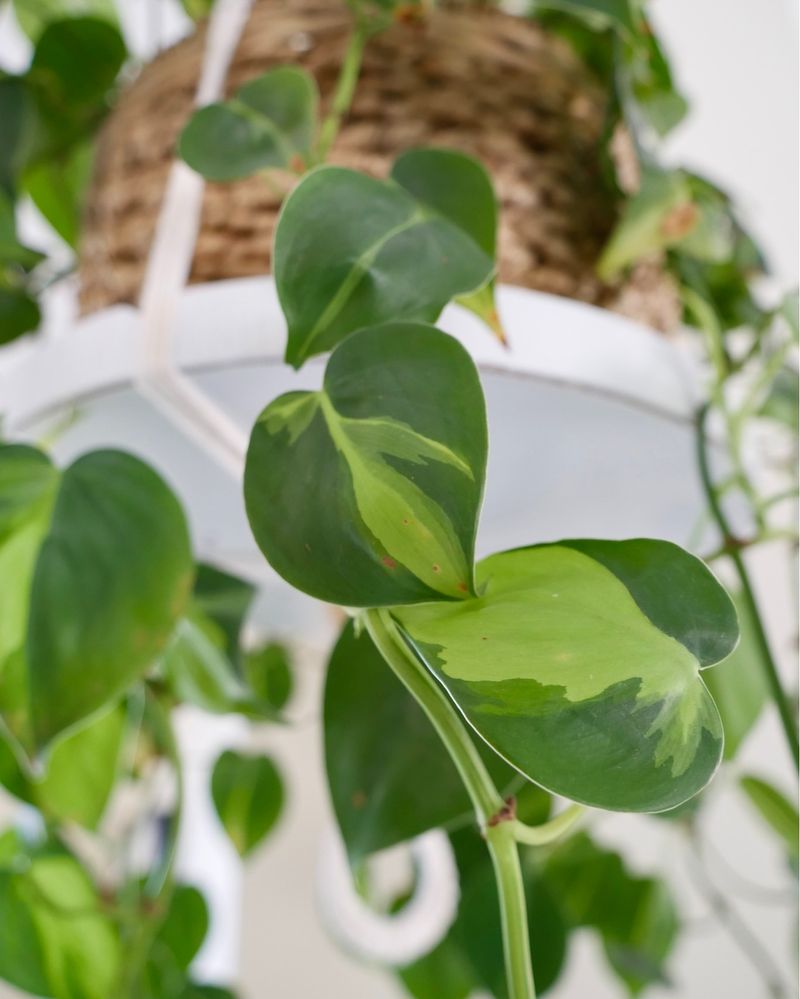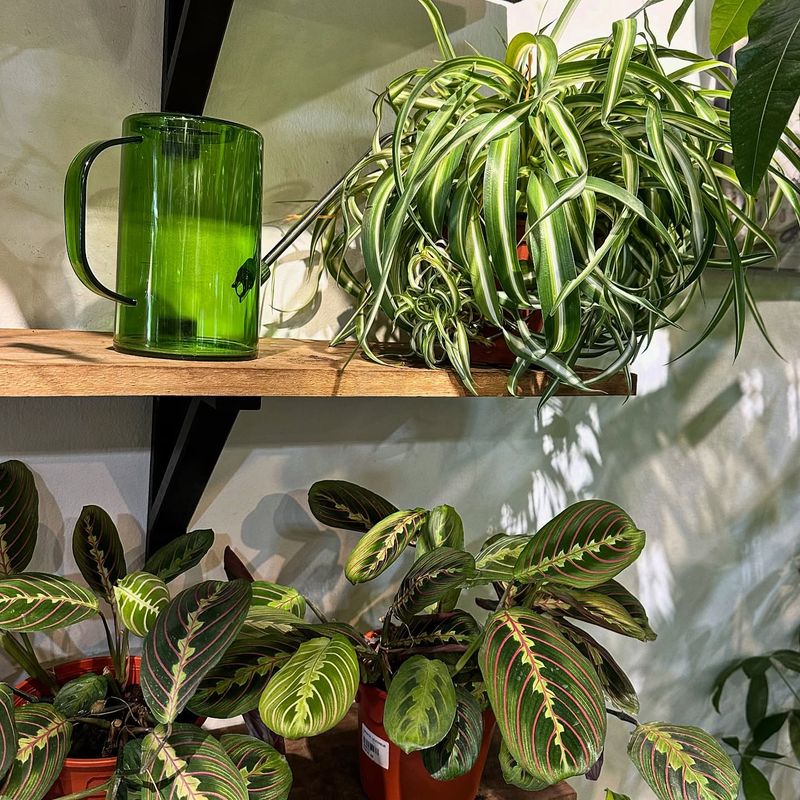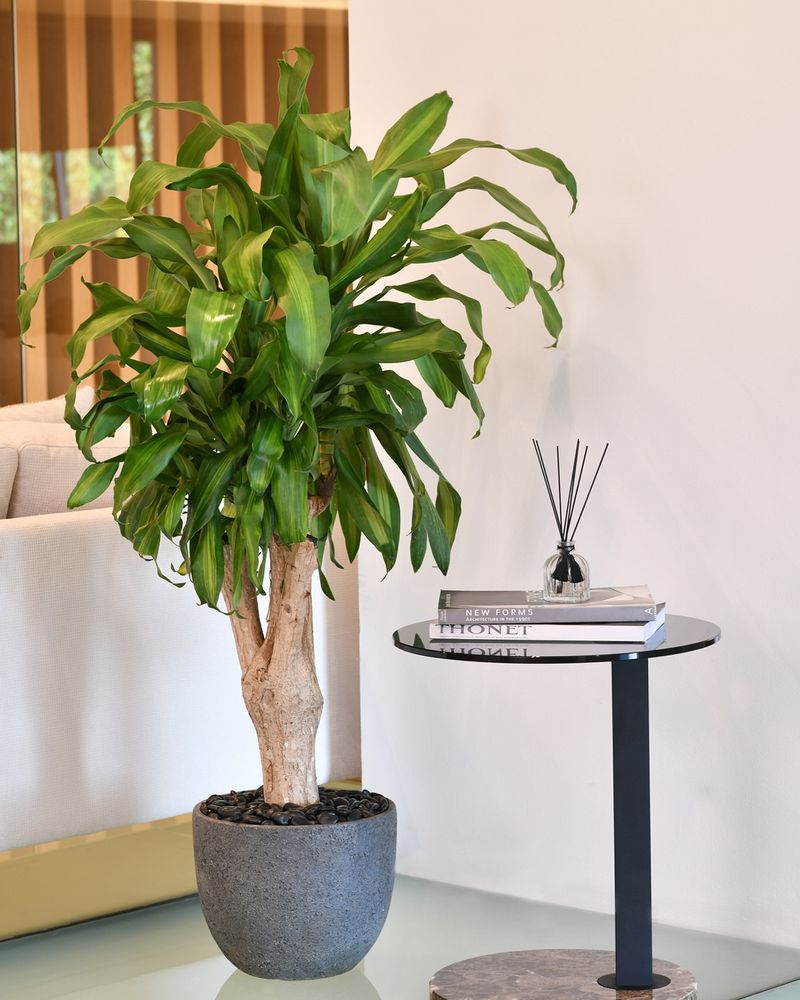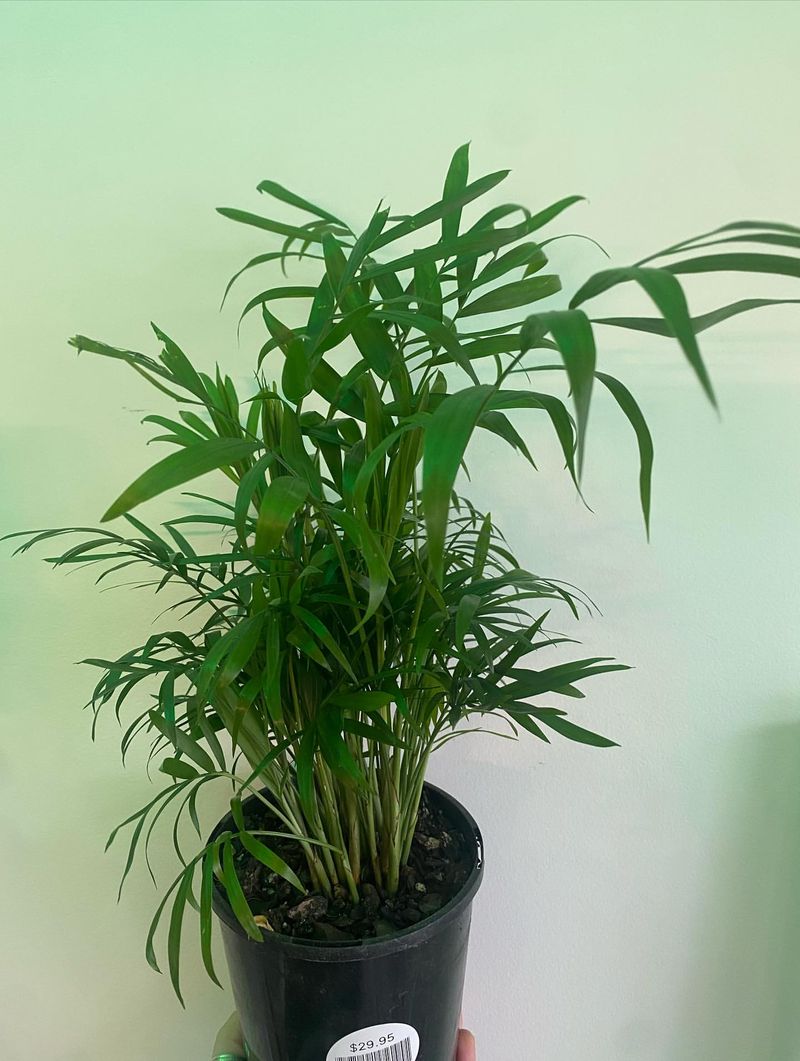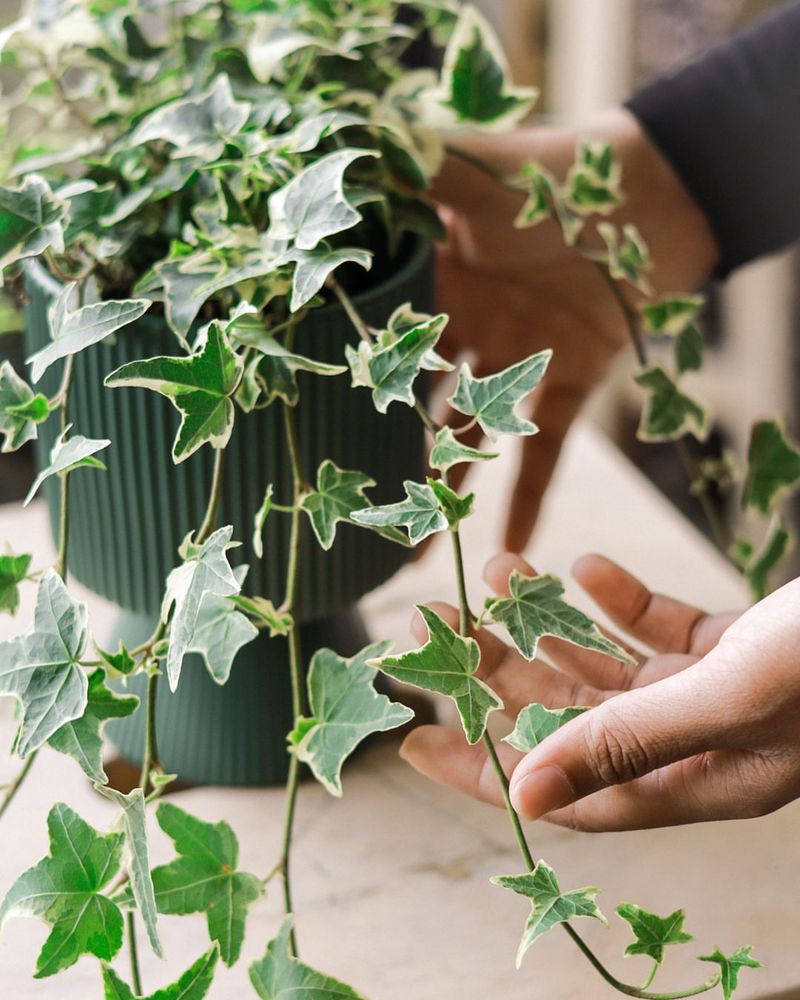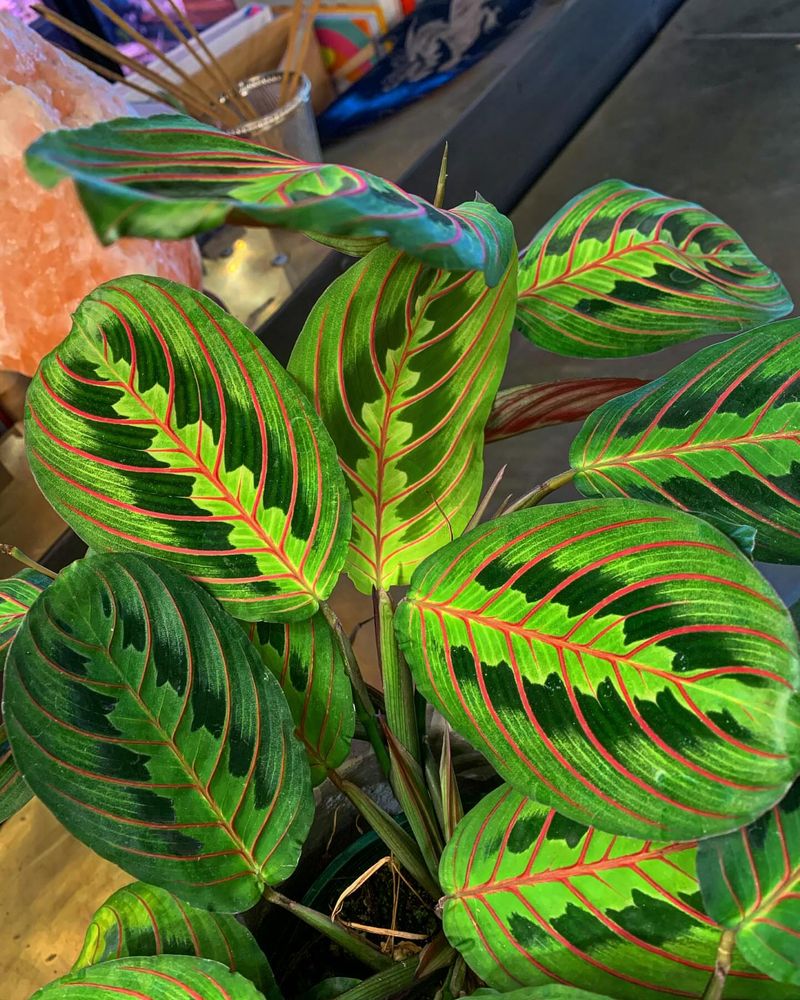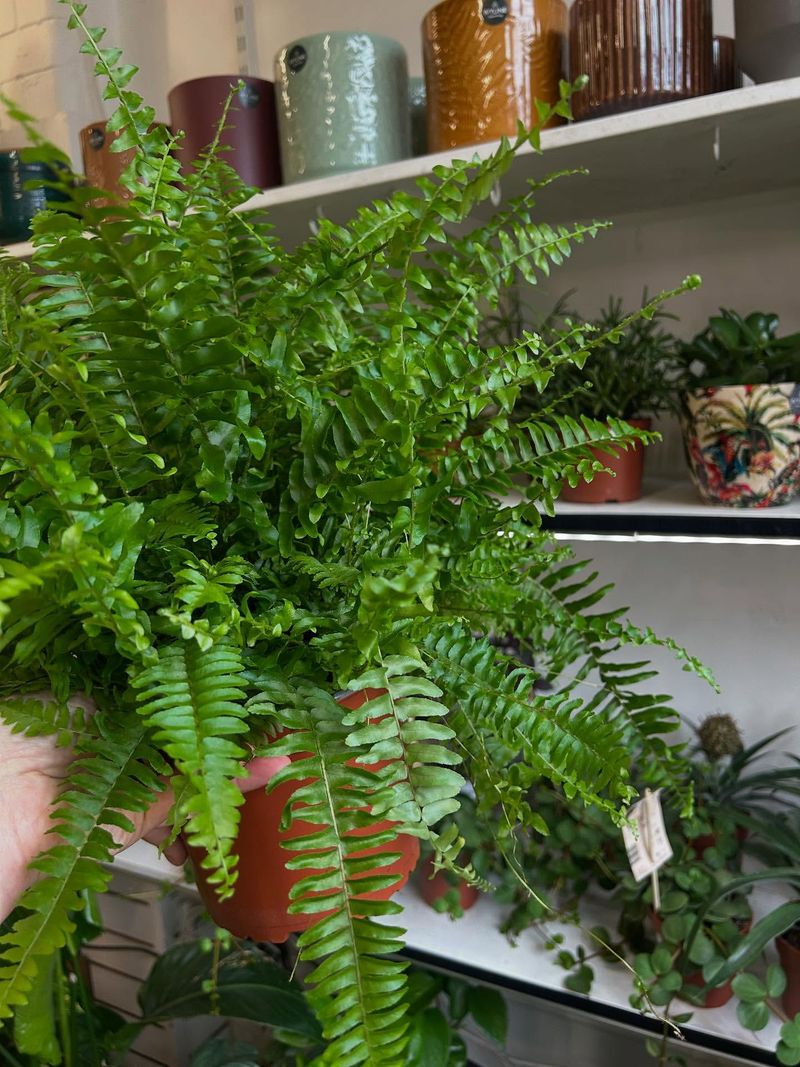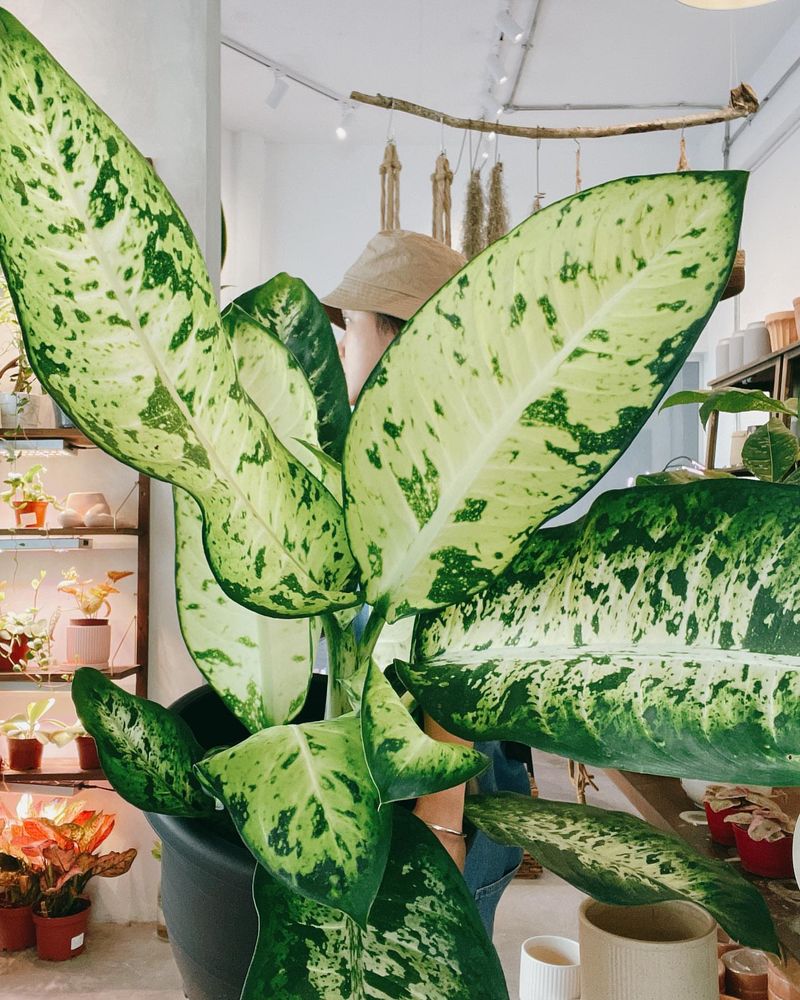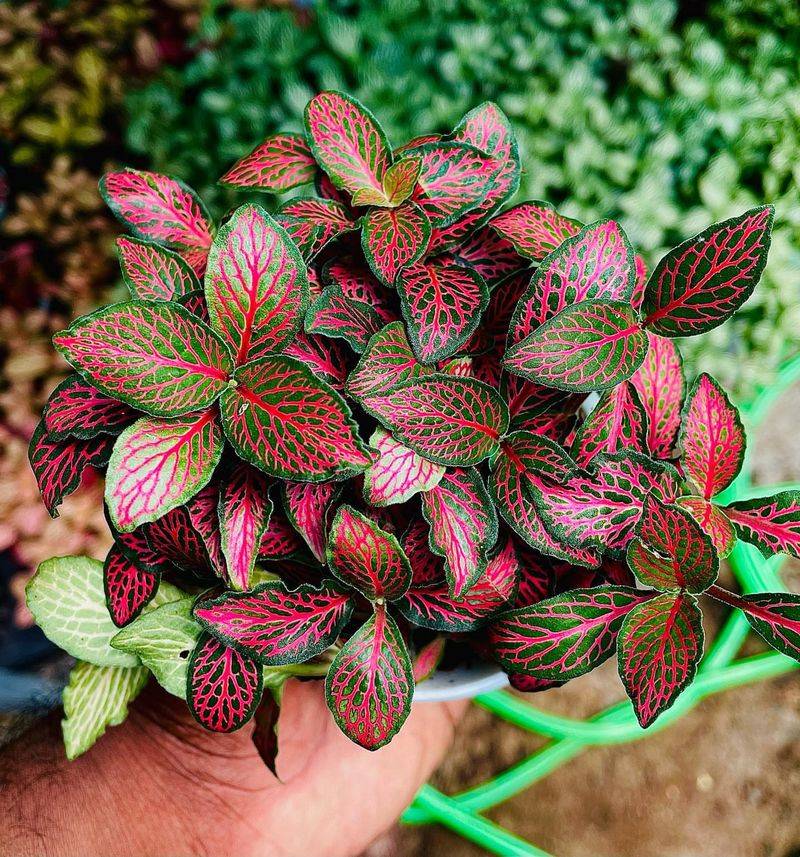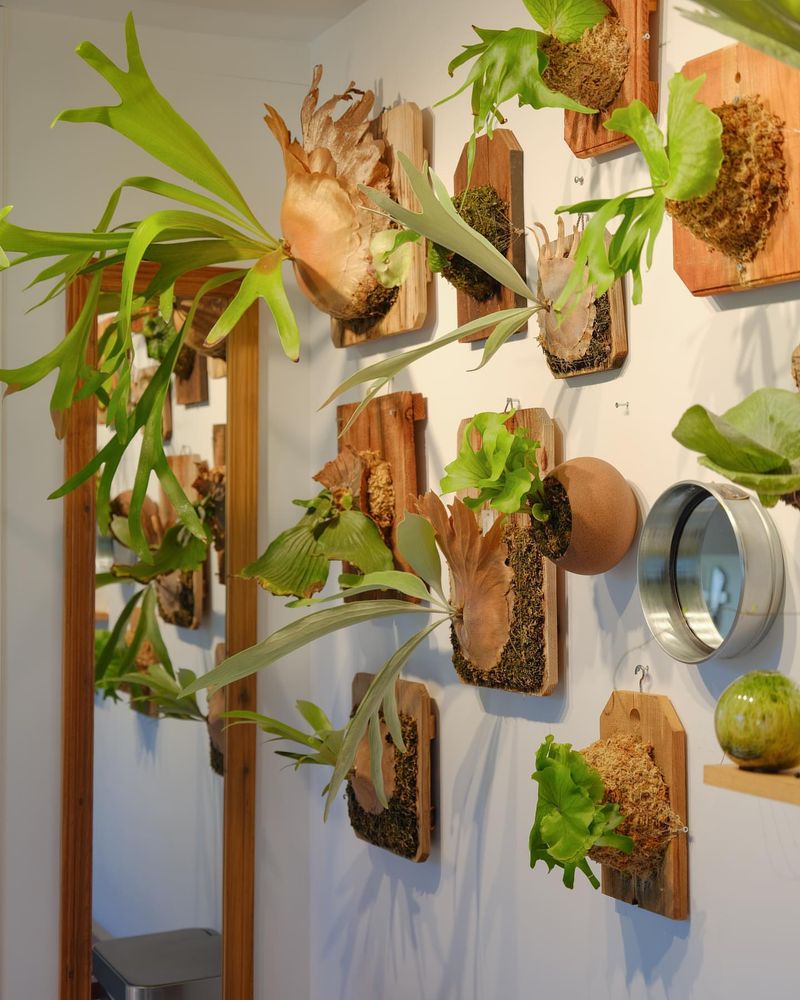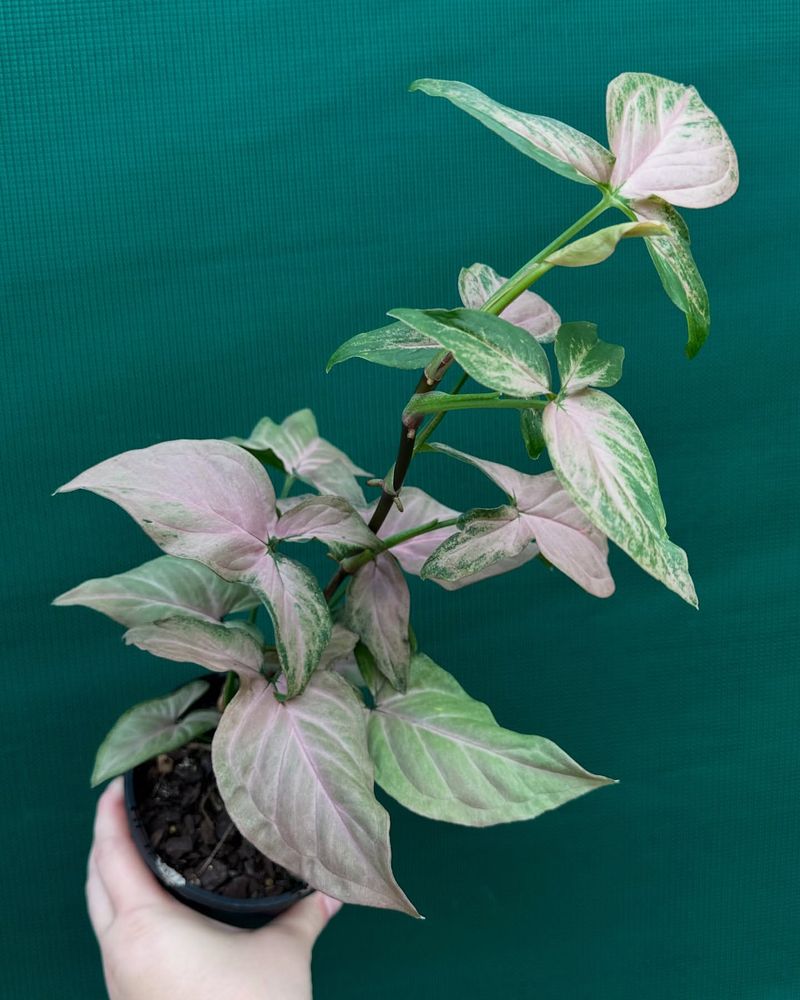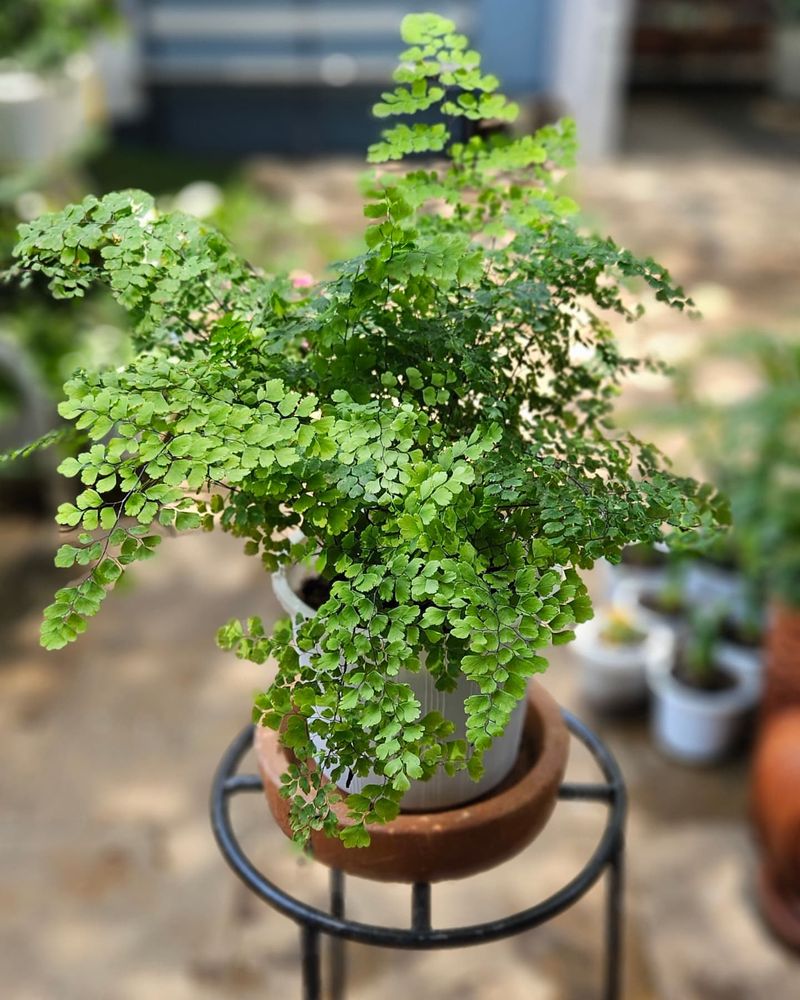Living in Oregon means embracing overcast skies and plenty of shade—especially during those long, rainy months. But dim corners don’t have to stay dull and lifeless. With the right plants, even the gloomiest spots can feel vibrant and alive.
Low-light tolerant plants are your secret weapon for turning shadowy spaces into lush retreats. Think deep green leaves, gentle textures, and a calming presence. These 19 picks thrive without direct sun, making them perfect for the Pacific Northwest vibe.
Whether it’s a quiet nook in your living room or a hallway that never sees daylight, there’s a plant that’ll love it there. Nature doesn’t need full sun to shine indoors—just a little care and the right leafy companions.
1. Snake Plant
Nearly indestructible and perfect for Oregon homes with minimal natural light. These sturdy plants thrive on neglect and can go weeks without water, making them ideal for busy homeowners or frequent travelers.
Their striking upright leaves add architectural interest to dark corners. During my years in Portland, I’ve kept snake plants in bathrooms with only tiny windows, and they’ve flourished despite the low light conditions.
The air-purifying qualities make them functional as well as decorative, removing toxins even in spaces where sunlight rarely reaches.
2. ZZ Plant
Glossy, dark green leaves that practically glow in dim spaces make the ZZ plant a standout choice. When I moved to Eugene, my north-facing apartment seemed hopeless for plants until I discovered this resilient beauty.
The waxy foliage stores water efficiently, allowing it to survive long periods without care. Many Oregon plant owners appreciate how it maintains its polished appearance even in the darkest months of winter when natural light is scarce.
Unlike fussier houseplants, ZZ plants rarely show brown tips or yellowing leaves in response to low light conditions.
3. Pothos
Trailing vines that adapt beautifully to Oregon’s indoor environments make pothos a favorite for elevated surfaces in dim corners. The heart-shaped leaves come in various patterns—golden, marble queen, or jade—offering options for any décor style.
My pothos in Salem has grown over six feet long despite sitting in a north-facing corner that receives minimal light. These plants communicate their needs clearly: drooping leaves mean they’re thirsty, making them forgiving for beginning gardeners.
Regular trimming encourages fuller growth, and cuttings root easily in water for propagation.
4. Peace Lily
Elegant white blooms emerge even in low light, making peace lilies exceptional among flowering houseplants. Their glossy green leaves create a lush backdrop for the distinctive spathes that appear throughout the year.
In my Portland apartment, a peace lily thrived in a bathroom corner with only an obscured north window. These plants act as natural humidity gauges in Oregon homes—dramatic drooping indicates when watering is needed, and they quickly perk up after a drink.
Beyond their beauty, peace lilies excel at removing indoor air pollutants, contributing to healthier home environments.
5. Chinese Evergreen
Patterned leaves in silver, green, and sometimes pink make Chinese evergreens stunning additions to dim Oregon interiors. These plants actually prefer indirect light, making them perfect for those problematic dark corners where other plants struggle.
During Oregon’s damp winters, they require less frequent watering than in summer months. My Aglaonema has survived three years in a north-facing corner of my Bend home with minimal care.
Newer varieties offer increasingly colorful foliage patterns while maintaining the plant’s legendary tolerance for low light conditions.
6. Cast Iron Plant
Living up to its name, this virtually indestructible plant tolerates the lowest light levels found in Oregon homes. The long, arching dark green leaves create a graceful fountain effect that softens harsh corners.
My cast iron plant has survived in a dark hallway corner for years, requiring watering only once every few weeks. These slow-growing plants are perfect for long-term placement in spots where other greenery would quickly decline.
Their ability to withstand temperature fluctuations makes them ideal for drafty corners near doors or windows in older Oregon homes.
7. Philodendron
Adaptable heart-leaf philodendrons bring tropical flair to shadowy Oregon spaces. Their vining nature makes them perfect for hanging baskets or climbing up moss poles in corners where floor space is limited.
A single plant I purchased at a Portland nursery has produced dozens of offspring through simple water propagation. The glossy leaves maintain their rich green color even in minimal light, unlike many houseplants that fade when light-deprived.
For those living in smaller Oregon apartments, philodendrons offer maximum visual impact with minimal space requirements.
8. Spider Plant
Arching variegated leaves send out baby plantlets that dangle playfully from mature spider plants. These air-purifying powerhouses thrive in the filtered light common in Oregon homes, especially during our cloudy seasons.
Last winter, my spider plant in Corvallis produced over a dozen babies despite sitting in a north-facing corner. The distinctive white-striped foliage adds brightness to dark spaces without requiring direct sunlight.
Beginners appreciate their forgiving nature—they clearly communicate when thirsty by losing their vibrant color temporarily.
9. Dracaena
Tall, architectural stems topped with fountain-like foliage make dracaenas perfect statement plants for Oregon home corners. Several varieties offer different leaf patterns and colors, from the rainbow-striped ‘Warneckii’ to the burgundy-edged ‘Marginata.’
My dracaena has thrived for years in a dim corner of my Eugene living room, gradually growing taller but requiring minimal care. These plants effectively filter indoor air pollutants while adding vertical interest to spaces where width is limited.
Their slow growth rate means they won’t quickly outgrow their designated corner spots.
10. Parlor Palm
Delicate fronds bring a touch of tropical elegance to dim Oregon interiors. Unlike many palms that demand bright light, parlor palms evolved as understory plants, making them naturally adapted to low light conditions.
During Portland’s grayest months, my parlor palm continues to put out new growth despite minimal natural light. The feathery texture contrasts beautifully with broader-leafed plants in corner groupings.
Their compact size at maturity (usually under 4 feet) makes them appropriate for smaller spaces where larger palms would overwhelm.
11. English Ivy
Cascading vines of variegated or solid green leaves transform bare corners into lush vertical gardens. While invasive outdoors in Oregon, English ivy behaves beautifully as a contained houseplant in low-light situations.
A small ivy plant I placed on a bookshelf in my Portland apartment now drapes elegantly down the wall, creating a living curtain effect. The plant’s European woodland origins make it naturally adapted to thrive in filtered light conditions similar to Oregon’s indoor environments.
Regular misting helps prevent spider mites, keeping the foliage fresh and healthy.
12. Prayer Plant
Dramatically patterned leaves fold upward at night in a prayer-like position, adding dynamic movement to static corners. The distinctive red veining on maranta varieties brings color to dark spaces without requiring bright light to maintain their markings.
My prayer plant in Salem continues showing its fascinating nightly leaf movements despite living in a north-facing corner. During Oregon’s humid seasons, these tropical natives are particularly happy, unfurling their patterned leaves to their fullest extent.
Their low, spreading growth habit makes them ideal for shelves or tables in corners where height is limited.
13. Boston Fern
Feathery fronds create a soft, woodland feel perfect for Oregon homes with their natural aesthetic. While Boston ferns prefer higher humidity than some low-light plants, they adapt well to shadowy corners with occasional misting.
During a particularly dark winter in my Portland house, my Boston fern maintained its lush appearance despite minimal natural light. The arching fronds cascade beautifully from hanging planters, softening harsh corner angles.
Their air-purifying abilities make them functional as well as decorative in spaces where air circulation might be limited.
14. Dieffenbachia
Creamy white and green variegated leaves brighten dim Oregon interiors with their distinctive patterns. These tropical beauties maintain their colorful markings even in low light, unlike many variegated plants that revert to solid green when light-deprived.
A dieffenbachia in my Bend apartment has grown impressively tall despite being tucked into a north-facing corner. Their upright growth habit makes them excellent space-savers in tight corners where floor space is limited.
Newer compact varieties stay under three feet tall, perfect for smaller Oregon apartments.
15. Fittonia (Nerve Plant)
Intricate leaf veining in white, pink, or red creates miniature masterpieces perfect for small Oregon apartment corners. These diminutive plants pack tremendous visual impact despite their modest size, with every leaf showcasing a network of colorful veins against deep green backgrounds.
My collection of fittonias thrives on a dark shelf in my Ashland home, asking only for consistent moisture. Their low, spreading habit makes them ideal for terrariums or dish gardens in corners where humidity can be maintained.
When grouped with other small low-light plants, they create fascinating miniature landscapes.
16. Staghorn Fern
Unusual antler-shaped fronds create living wall art for Oregon homes with limited corner floor space. Unlike traditional potted plants, staghorns can be mounted on boards and hung like sculptures, utilizing vertical space in dark corners.
Despite the rainy reputation of Oregon, indoor air can become dry, so occasional misting benefits these epiphytic plants. My mounted staghorn has become a conversation piece in my Portland dining room, thriving in a corner that receives only ambient light.
Their unique growth habit adds textural interest unlike any other houseplant.
17. Calathea
Intricately patterned leaves in countless varieties make calatheas the perfect choice for plant collectors seeking diversity in dark corners. Each variety offers distinct markings—pinstripes, peacock patterns, or painted-looking foliage—while sharing a tolerance for low light.
During Oregon’s darker months, my calathea collection continues displaying their remarkable patterns despite minimal natural light. Like prayer plants, many varieties fold their leaves at night, creating dynamic movement in otherwise static corners.
Their tropical appearance brings warmth to Oregon interiors during our cool, gray seasons.
18. Arrowhead Plant
Distinctive arrow-shaped leaves emerge compact but eventually trail as the plant matures, offering evolving beauty for Oregon home corners. Young plants form tight clusters of foliage, while older specimens develop vining habits that can be trained up supports or allowed to cascade.
My arrowhead plant in Salem started as a small tabletop specimen but now gracefully drapes down a bookshelf in a north-facing corner. The newer varieties with pink or burgundy tinged leaves maintain their coloration even in limited light.
Their adaptable growth habit makes them versatile for various corner configurations.
19. Maidenhair Fern
Delicate, lacy fronds create ethereal beauty that softens harsh corner lines in Oregon homes. While having a reputation for being finicky, maidenhair ferns actually adapt well to low light—it’s inconsistent moisture that typically causes problems.
A small humidifier near my maidenhair in Eugene has helped it thrive despite being placed in a dim corner. The fine-textured foliage offers wonderful contrast when grouped with broader-leaved plants like peace lilies or Chinese evergreens.
Their bright green color brings a refreshing pop to dark corners during Oregon’s gray months.

